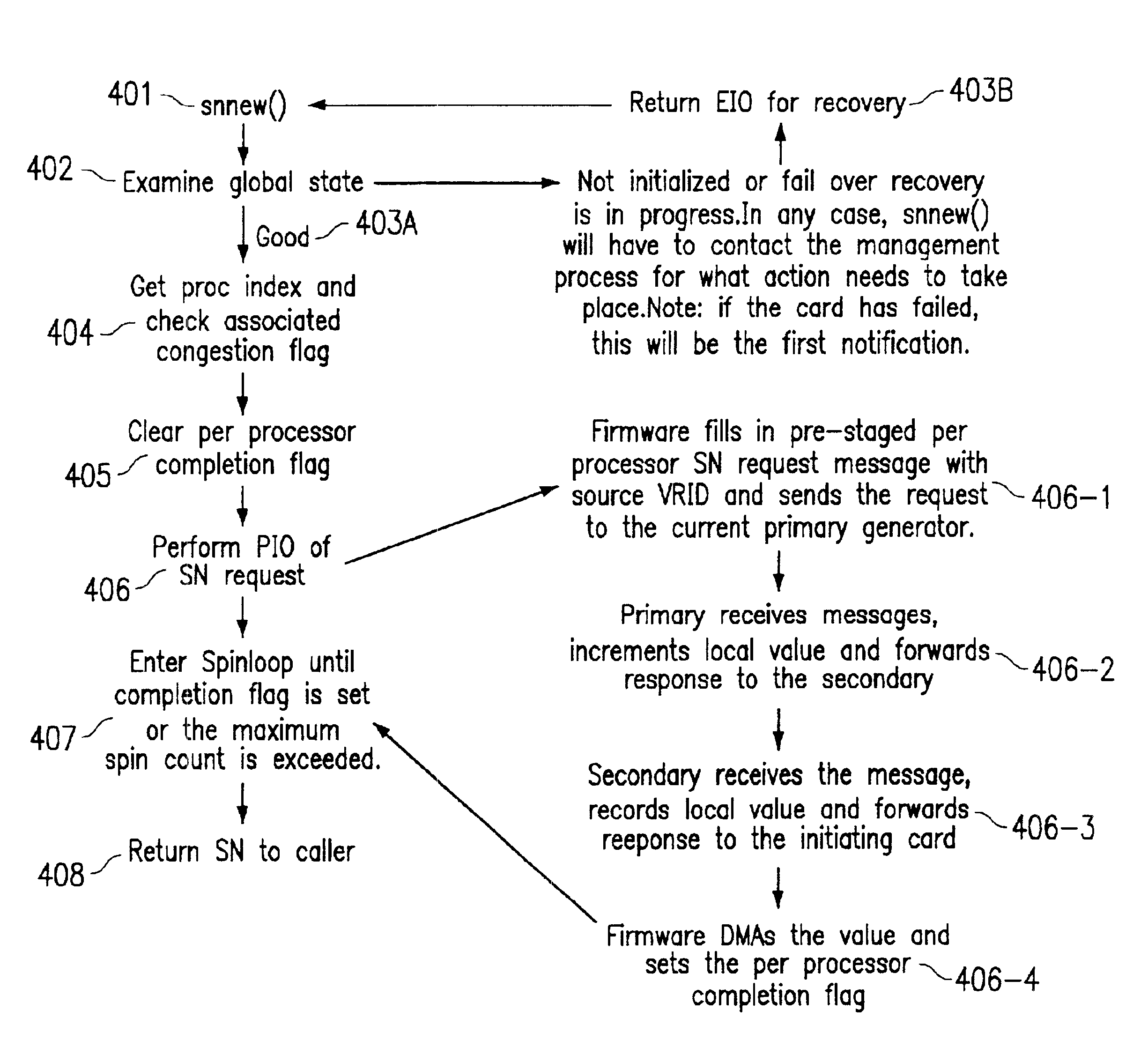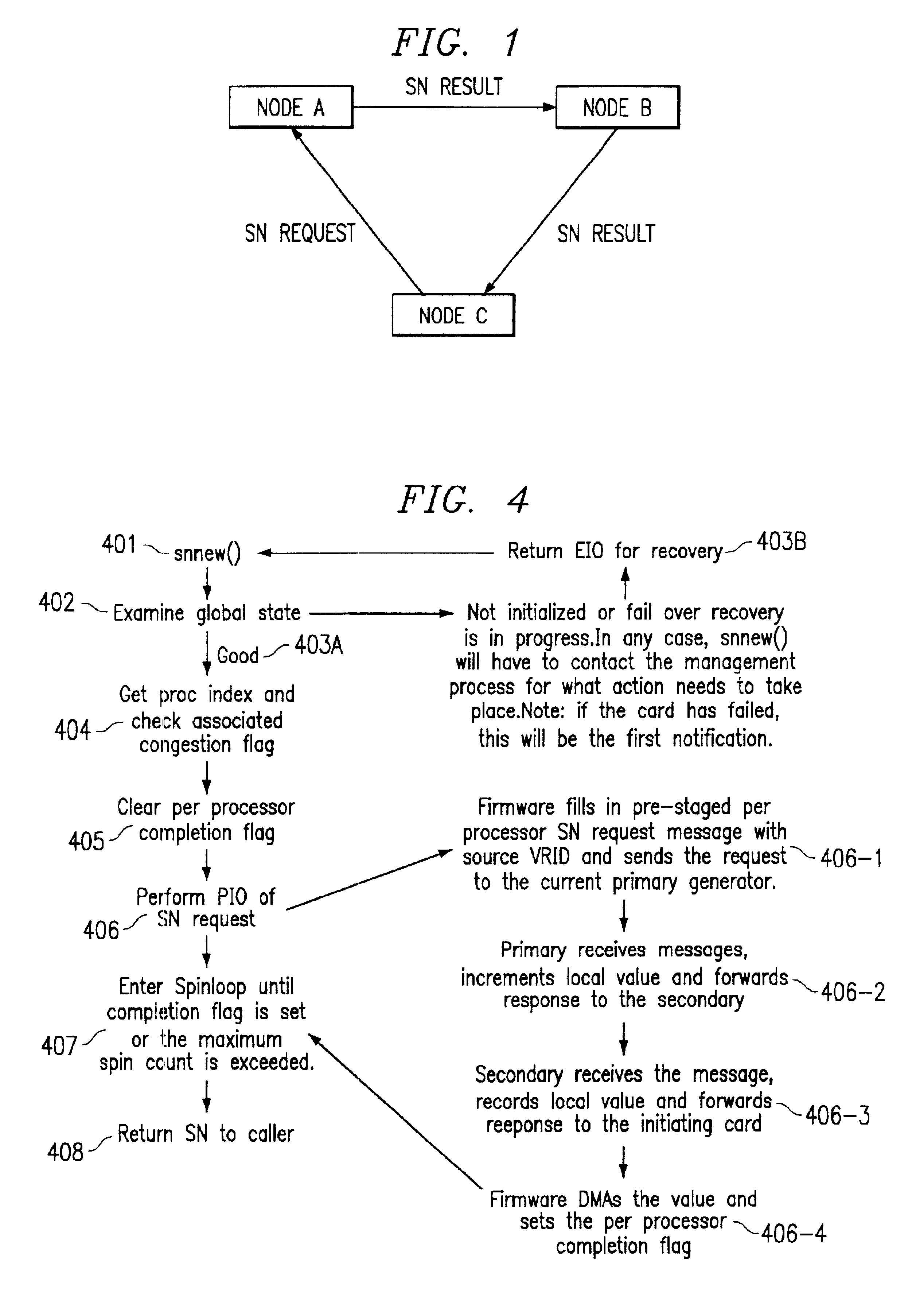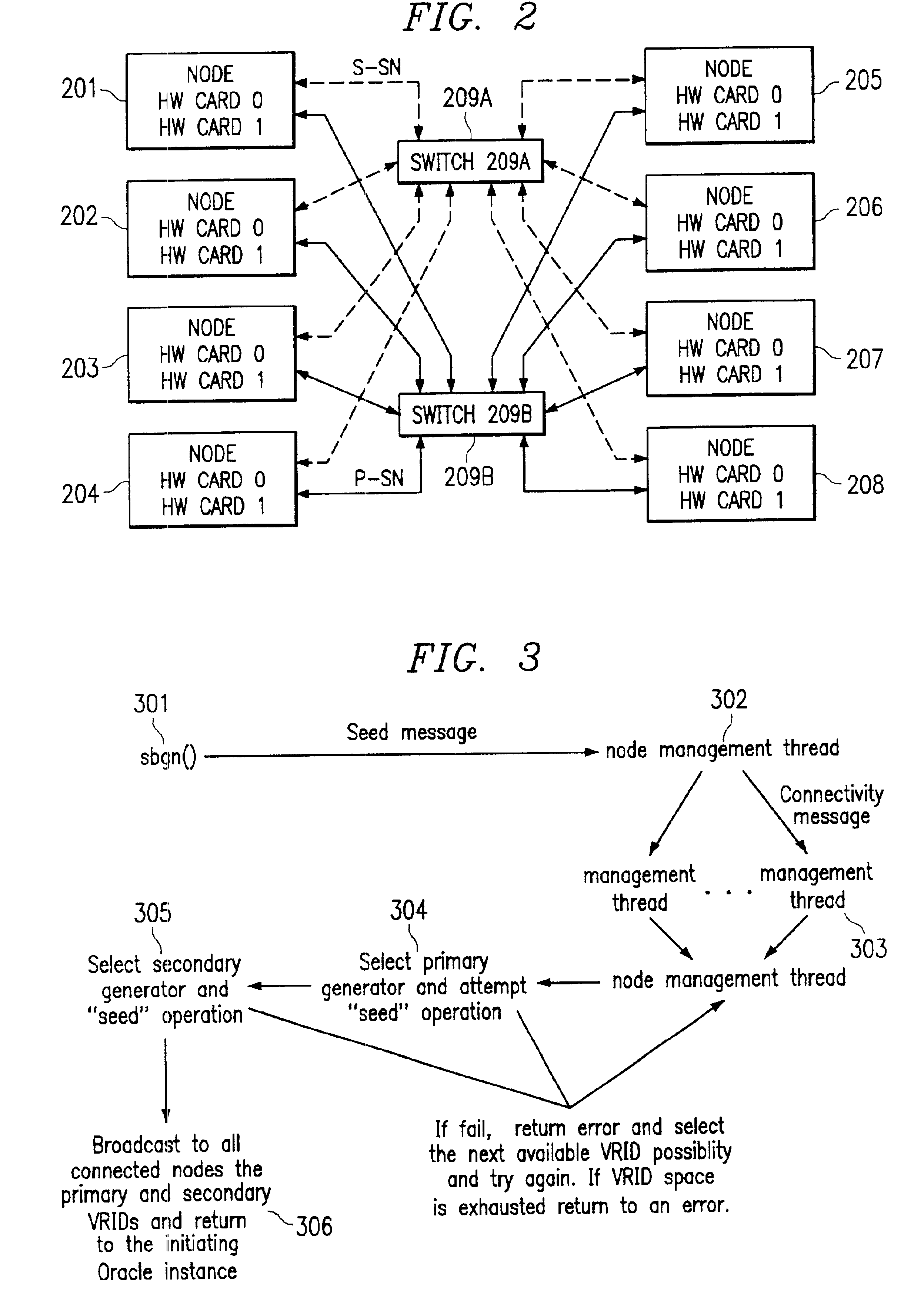Highly available, monotonic increasing sequence number generation
a monotonic increasing and sequence number technology, applied in the field of monotonic sequence number generation, can solve problems such as the inability to provide primary units, and achieve the effect of low latency and high availability
- Summary
- Abstract
- Description
- Claims
- Application Information
AI Technical Summary
Benefits of technology
Problems solved by technology
Method used
Image
Examples
Embodiment Construction
[0015]Turning now to the drawing, FIG. 1 illustrates a simplified signaling progression associated with sequence number generation. An application process at node C may generate a sequence number (SN) request. Firmware at node C generates a SN message with the ID of node A thereby causing the request to be routed to node A. Node A responds to the request by creating an SN response comprising the ID of node B, thereby causing the SN response to be routed to node B. After receipt, node B forwards the request comprising the ID of node C, thereby routing the SN response to its ultimate destination, node C. The firmware initiates a direct memory access (DMA) to place the received response in a memory location accessible by the originating application process.
[0016]It is an advantage of the present invention to facilitate the embodiment of sequence number generation in a wide variety of hardware and / or firmware implementations. By way of example and without limitation, the sequence number...
PUM
 Login to View More
Login to View More Abstract
Description
Claims
Application Information
 Login to View More
Login to View More - R&D
- Intellectual Property
- Life Sciences
- Materials
- Tech Scout
- Unparalleled Data Quality
- Higher Quality Content
- 60% Fewer Hallucinations
Browse by: Latest US Patents, China's latest patents, Technical Efficacy Thesaurus, Application Domain, Technology Topic, Popular Technical Reports.
© 2025 PatSnap. All rights reserved.Legal|Privacy policy|Modern Slavery Act Transparency Statement|Sitemap|About US| Contact US: help@patsnap.com



